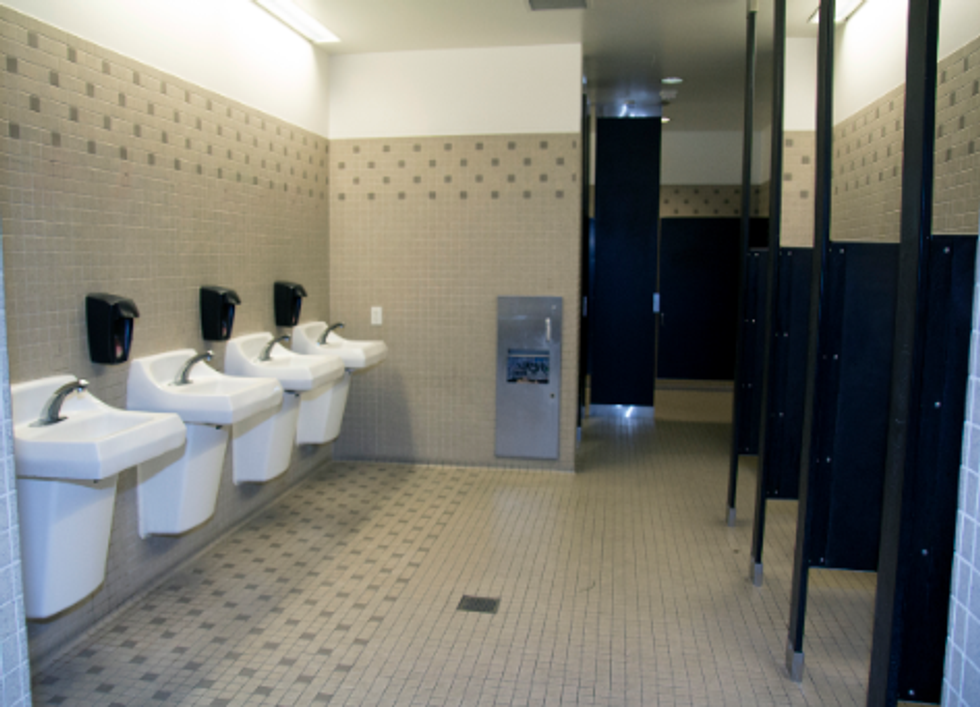I'm going to give credit to my roommate, Courtney Tschantz, for co-authoring this with me.
Please do not think that we are writing this because we are the best drivers on the road. Our combined total of speeding tickets will tell you a different story. We are writing this because if we are being honest, we are all bad drivers who need reminding that we are bad drivers. So here are some ways we can become better drivers and not make other people angry.
1. Please use your turn signal.
Yeah, you know that little lever on the left of the steering wheel? The one that makes a little arrow start blinking? It’s there for a reason...specifically, when you are planning to turn. I don’t know what you learned in Driver’s Education, but I learned that you use this little blinker doohickey 100 yards before you’re about to turn ,and not right as you are turning. Also, please use this when you are changing lanes. It's common courtesy. They didn’t install these into cars just to take up space, you fools. So please use it.
2. If you hear a siren, then move over.
Do not, under any circumstance, stay in the same lane when an ambulance is trying to get by you. Especially if you’re on a highway and there is a major accident. Let the EMS through so they can do their job. Do you want to be responsible for the death of someone because the EMS couldn’t get through?
3. Do not drive exclusively in the left lane.
This is called "camping" because you are essentially contemplating the meaning of life in the left lane like you would on a camping trip. In the woods, you are not in anybody's way. On the road, camping is considered to be extremely annoying...especially if you are going below the speed limit in the left lane. The left lane is supposed to be for passing only. If you have to pass someone, then pass. And then get back in the right lane so those of us who want to pass you can do so and go on with our lives.
4. Two lane road etiquette.
News flash, you can pass people who are going slower than you want to go. I know, it’s a shocking epiphany. However, you can only pass when you have a dashed line on your side, or if there is a dashed line in between the lanes. That being said, if you are going slow, you will be passed. Do not speed up as you are being passed, this will only piss off the driver trying to pass you.
5. Driving an ego machine slowly is not impressive.
Especially if you want to go 20 mph under the speed limit. Yeah, you know what / who I’m talking about.
6. Do not drive in the snow.
Unless you know what you’re doing and have four-wheel drive (or all wheel drive), don’t drive at all. Just walk. The exercise and fresh air will be good for you. Know your limits, and your car’s limits. Plan on slowing down early at stop lights. However, here's the truth. No one knows how to drive on ice because no one can predict how their car will lose control. Go slowly, test your brakes often (by tapping them slightly), and give the road your undivided attention. Texting while driving is dangerous enough when the weather is good. Doing it while there is snow and ice on the road puts you at a much higher risk for ending up in the emergency room. Also, if you start to skid, try not to over-correct, and always remember that more accidents occur in rainy weather than in ice...usually.
(You only "know what you are doing" if you are from a state or country above the Mason-Dixon line.)
7. Driving with cyclists on the road.
Yes. Cyclists exist. Even if you are a road cyclist, you hate driving with them on the road. It makes you nervous because at any minute they could swerve off or pop a tire and go flying into your lane. So that’s why you give them four feet of space. It’s kind of the law. If you give us four feet of space and don’t honk at us, we would greatly appreciate it.
8. Roundabout etiquette.
People still have issues with knowing what “right of way” and “yielding” mean. The cars in the circle trump cars that are waiting to enter the traffic circle / roundabout. If you are outside the circle, then wait your turn to enter. That said, effectively driving through a roundabout also requires taking initiative. If you have good motion perception skills, then you understand that a car entering the roundabout from a different point at the same time as you will not hit you if you are both going the same speed. This means that you and another car can get through a roundabout at the same time. This is why roundabouts are more efficient than three or four way stops. I know this may be hard to understand, but please try.
9. Don’t use your cruise control when you’re driving in the rain.
This is such an important issue that not many people know about. Think about it; the car doesn't know it's raining outside. So when cruise control is on and the wheels hit standing water, they can over-rotate and cause the driver to lose control. The car will try to keep moving at its set cruising speed, which is dangerous when you hit a big puddle of water. There are countless stories of people spinning into ditches because of this, and yet Driver's Education still does not mention it. If it is raining outside, then turn the cruise control off -- and then also turn on your headlights because it's annoying for the rest of us if you don't.
Obviously, these are not the only areas of driving that need some work -- don’t even get us started on people who park like they’re five-years-old! But here’s the deal. We are all adults, and we are all trying to make it to Christmas. So please, if you value your life and the lives of others, then take these tips to heart and try to be a safe and considerate driver.











 Photo by
Photo by 








